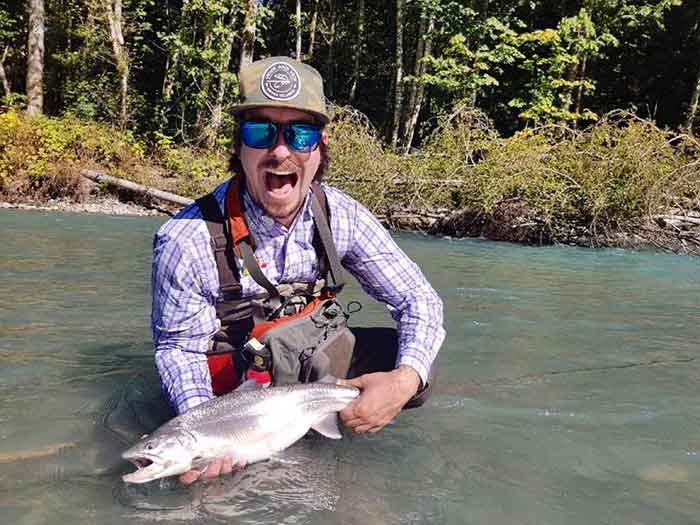Fly Fishing Isn’t Hard
Fly Fishing Isn’t Hard – By Zach Copland.
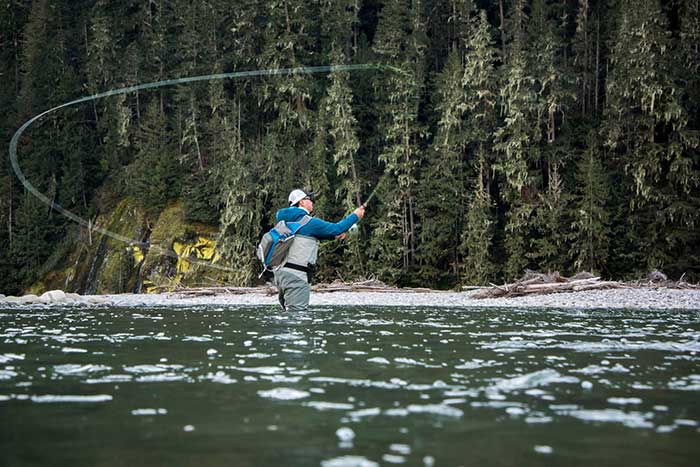
Working in a tackle shop, we hear it all the time, “I want to get into Fly Fishing but it is TOO EXPENSIVE and TOO DIFFICULT.” Yes, Fly Fishing CAN be expensive and it CAN be difficult, but what hobby isn’t difficult and expensive when you first start out? I just wanted to touch on some basics for you all so that the next time you are in your local shop you will not be as confused and intimidated and hopefully consider getting your first fly rod set up.
Of course, these aren’t definitive rules to go by but they should help you to understand what to look for. Like every sport, Fly Fishing has it’s flagship companies that make amazing gear that can cost you an arm and a leg and maybe a second mortgage on your home. That being said, a lot of these companies own smaller more budget-friendly brands that can make getting into the sport quite painless with a fantastic quality product. 2 brands that quickly come to mind are Dragonfly and my personal favorite Redington.
Budget-Friendly Brands
There are other brands out there that offer budget-friendly setup’s, but Dragonfly and Redington have been around for a number of years and aren’t going anywhere anytime soon. Both brands offer complete outfits around the $200 CDN price range and they are fantastic bang for your buck. Now, when I say complete outfit, you could literally grab a couple flies as well as your new combo from your local shop and hit the water right away! It’s that EASY.
These combos, like the Redington Crosswater, come in a couple different size options, the most common being a 9 foot 5 weight and a 9 foot 8 weight. I will touch on “weight’s” of rods in a bit. This combo comes with a rod, reel, backing, fly line, a leader and even a nice little case that holds the entire outfit when you aren’t using it.
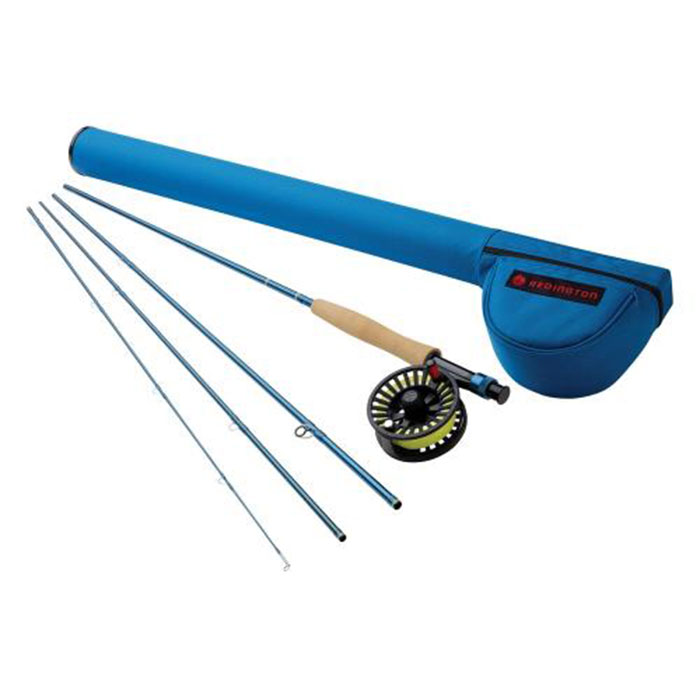
Fly Fishing Lingo
When it comes to rods for beginners I like to keep things simple. A good starting point for most beginners is a 9 foot 5 weight rod that has a medium to medium fast action. There’s that word “weight” again. No, it doesn’t mean that your rod can only handle a 5-pound fish. I have caught some hefty fish in the 8-10 pound range on my 5 and 6 weight rods. The weight number given to rods is used to help identify what size line and reel you will need to go with your rod (ie: a 5 weight rod, a 5 weight line and a 5 weight reel), as well as to help give the angler a general idea of the strength of the rod.
The smaller the “weight” of a rod the smaller the fish it should be used for. A 3-weight rod is great for small stream trout and panfish, a 5-weight rod is great for most trout fishing in lakes and rivers and an 8-weight rod is good for larger species like salmon and steelhead. This isn’t to say that you can’t use your 8 weight to fish for smaller species, it just isn’t as much fun, as the strength of the rod doesn’t allow smaller fish to fight as much.
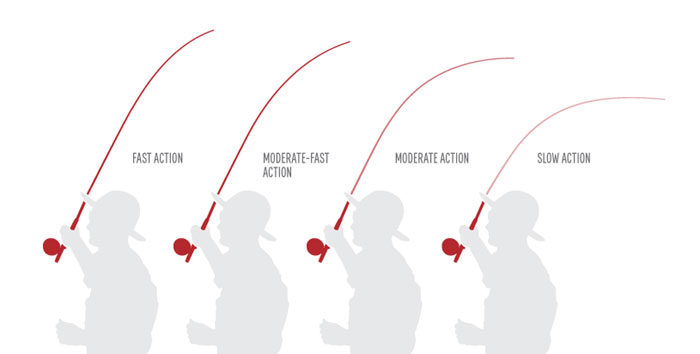
Rod action is an important feature for beginners to look for. Like I said before, I prefer a medium to medium-fast action rod for beginner fly anglers. This type of rod action gives the beginner the most versatility in presentation when it comes to fly fishing. It is “slow” enough that it can present a delicate dry fly fairly effectively without spooking fish and it is “fast” enough that it can cut through most wind and throw larger fly patterns with relative ease. There are many different rod actions out there and as you get more comfortable casting you will find the action that suits your cast or your presentation the best.
Living here in BC we are lucky to have a multitude of species to fish for, unfortunately, they usually require different presentation techniques and having rods with different actions is a big benefit. Don’t worry we never tell your significant others how many different rods you have when they come into the shop to get you gifts for birthdays and Christmas.
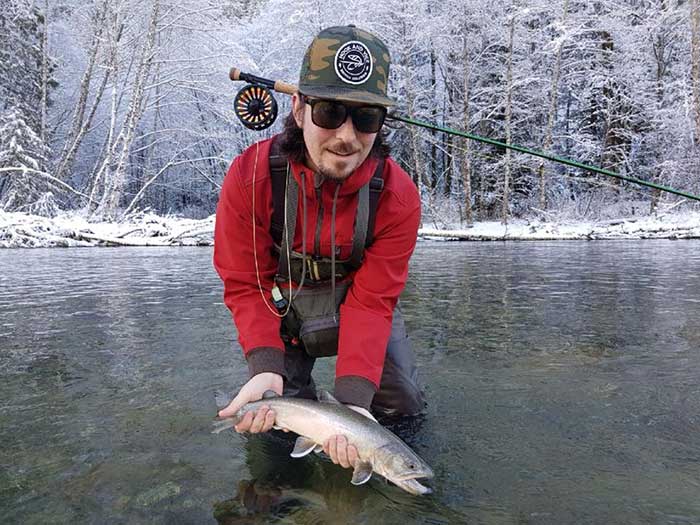
Lines and reels are integral to the act of fly fishing because without them we wouldn’t have anything to attach a fly to and we would have just a bunch of line on the ground. For beginners, I find that you can save a couple bucks here by not getting anything too crazy expensive as you most likely won’t be able to tell the difference between a $50 line and a $120 line. The Rio Mainstream line that comes with the Redington Crosswater has a very EASY casting weight forward floating line that is perfect for any angler.
Personally, I find that the reel on my trout rods is really there to hold the line. If you need it, the drag on the Crosswater will be able to handle any fish that you hook into. The Crosswater reel also has interchangeable spools that you are able to purchase separately should you want a couple different lines. For example a full sink line for lake fishing. If you fish in rivers you will probably only need a floating line and maybe an additional sinking leader, also called a sink tip, which you can purchase for around $20 CDN.
Sink tips come in a variety of lengths and sink rates; some sink slow at a rate of 1.5 inches per second and others sink faster at a rate of 7 inches per second. These are a great alternative to save a few bucks if you don’t want to invest in an extra spool and full sinking line for fishing in lakes, as they get your fly down in the water column where most of the fish will be. As for leaders, any 9 foot 5X tapered leader will do the trick for most trout fishing. Leaders are fairly inexpensive and run about $10 CDN for a 2 pack. Another item that I like to have that helps my leader last longer is a spool of tippet material, these usually run $6-$8 CDN.
At the end of each tapered leader you will find a section of about 12-18 inches of very fine monofilament, “tippet”, this helps to make the leader almost invisible to fish. As you change flys, your leader will start to get thicker and shorter so I like to add 12-18 inches of 5X tippet via a DOUBLE SURGEONS KNOT to help prolong the life of my leader. If you noticed there’s the number “5” again, 5 weight rod with a 5 weight reel that holds a 5 weight line and a 5X leader with some 5X tippet, see how easy it is to select the proper gear? Just make sure that all the numbers line up.
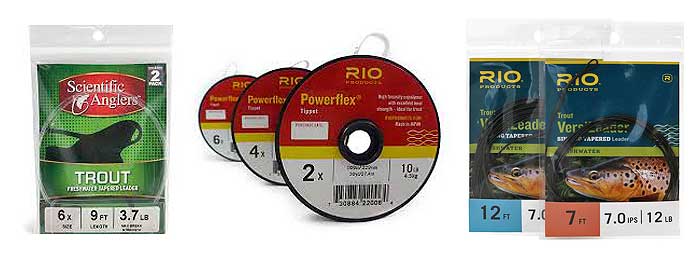
How much is that all together?
If I have done my math correctly, for the combo, sink tip, leaders, and tippet we are looking around $240 for everything. If you have a good local shop they may even throw in a few flies to get you going on your local waters. This is obviously the most budget-friendly way to get into the sport and there may be a couple other accessories that you might want like forceps and nippers, fly boxes and maybe even a bag. For under $300 you can have a solid kit to learn on. The warranty of the rod and reel reflect these savings as well, the Redington Crosswater Outfit only comes with a 1-year warranty.
If you are looking at something that is a bit of a step up you will be piecing together a combo. I would look at the Temple Fork Outfitters Pro II rod which comes in a variety of lengths and weights and it retails for around $200 CDN and comes with a Lifetime Warranty. For a reel, I would seriously consider the Redington Behemoth which is the best bang for your buck in my opinion on the market. This reel comes with a Lifetime Warranty and retails around $150 CDN.
For a line, I would grab a Rio Mainstream to get you going which costs about $50 CDN. If you go this route you have a very solid combo for a fair bit under $500 that you will be able to grow with and not have to worry about if you slip and fall on your rod or slam your rod in your car door or ever snap the tip while trying to land a fish.
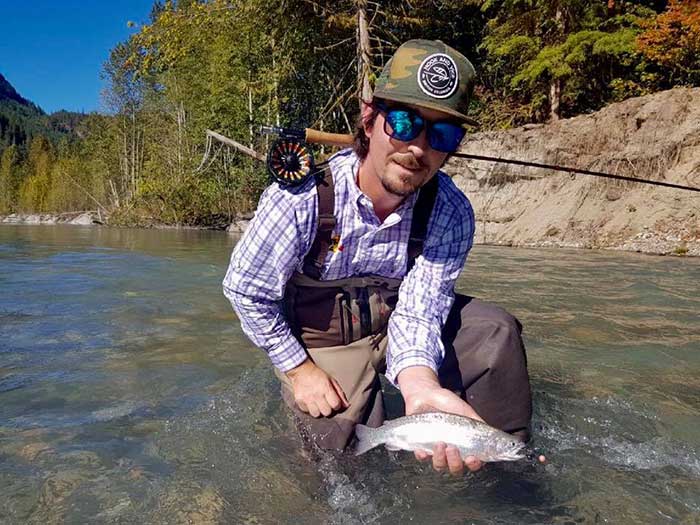
Now that we have debunked the “It’s too expensive” myth, it is time for the “It’s too difficult” myth. Yes, Fly Fishing can be difficult, if you let it be. Anglers get right into fly tying and building their own leaders and fly lines and even their own fly rods. Most fly anglers are more than happy to buy a couple of pre-made flies and tie them onto their combo kits and throw the fly in the water and there is nothing wrong with that, don’t ever let another angler tell you otherwise! As long as you are out enjoying nature responsibly I really don’t have an issue with how you do it. Casting is something we could spend a lot of time on but to keep it simple for beginners in this post let’s keep it to the most basic of all casts, the Roll Cast.
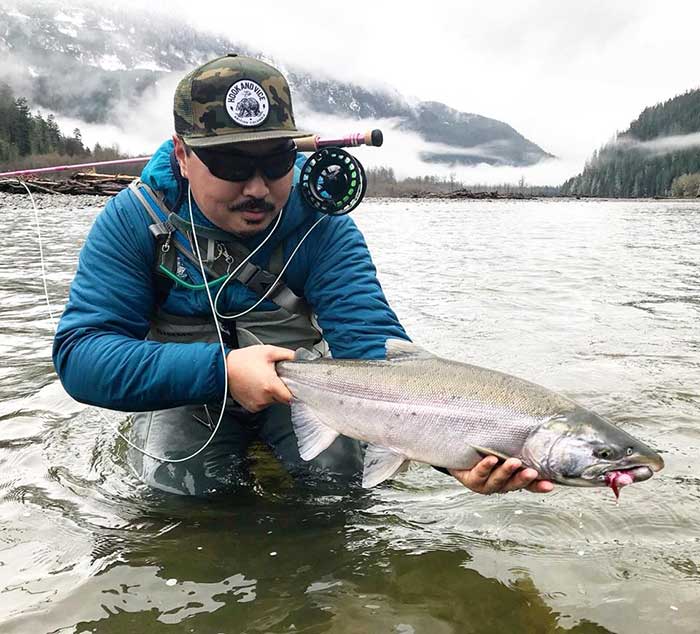
The Roll Cast
Unlike a traditional casting rod where you use a weight attached to your line to present your lure, in fly fishing the fly line is the weight that allows you to present your fly to the fish. Without the weight of the fly line, your fly rod wouldn’t be able to load (bend) to be able to cast your fly. The Roll Cast is very effective because it allows you to cast when you have tree’s or high banks behind you and it also gives beginner anglers the feeling of a good cast when done properly. It is also easy to learn because there is only a forward casting motion.
Timing with back casts or false casts can cause a lot of headache for beginner anglers, this is why the roll cast is a great place to start. To do this you will need to be on the bank of a water body, either a slow-moving river or lake. Start by pulling “stripping” line off of your reel, about 15-30 feet, and flick your rod tip side to side to get the line in the water in front of you. Once your line is in front of you, slowly raise your rod tip with your hand so that your hand is in line with your ear and the tip is pointing straight up to the sky. You will then pause and see that your line has formed a loop from the tip to the water that looks like a “D”, we call this a “D loop.”
Now you will simply flick your hand forward and your line will unravel in front of you and you are fishing. It is that EASY! Obviously there is a multitude of casts that you will learn but for now, this is really all that you need. Here is a great video demonstrating the Roll Cast.
I hope that these tips make your journey to become a fly fisher a lot easier. If you have any questions come visit myself and Jordan at Pacific Angler in Vancouver and we will be more than happy to get you set up with all the right gear!
Zach Copland
Zach’s passion for fishing started out early with summer trips with his Grandfather and Dad fishing for salmon around the gulf islands. His passion turned into an obsession when he got his first fly rod and tying kit. He fishes the lakes around the Sea to Sky corridor and the mouth of the Fraser River during the spring and summer. During the fall and winter, he can be found on the Squamish River hunting for salmon, bull trout, and steelhead. Zach loves tying streamers and coming up with new variations of your favorite flies. His favorite Hook And Vice Cap is the Captain Fly Pro Model.
Follow Zach on Instagram at: https://www.instagram.com/zachula_/ and on Facebook at: https://www.facebook.com/fridaynightflies/
